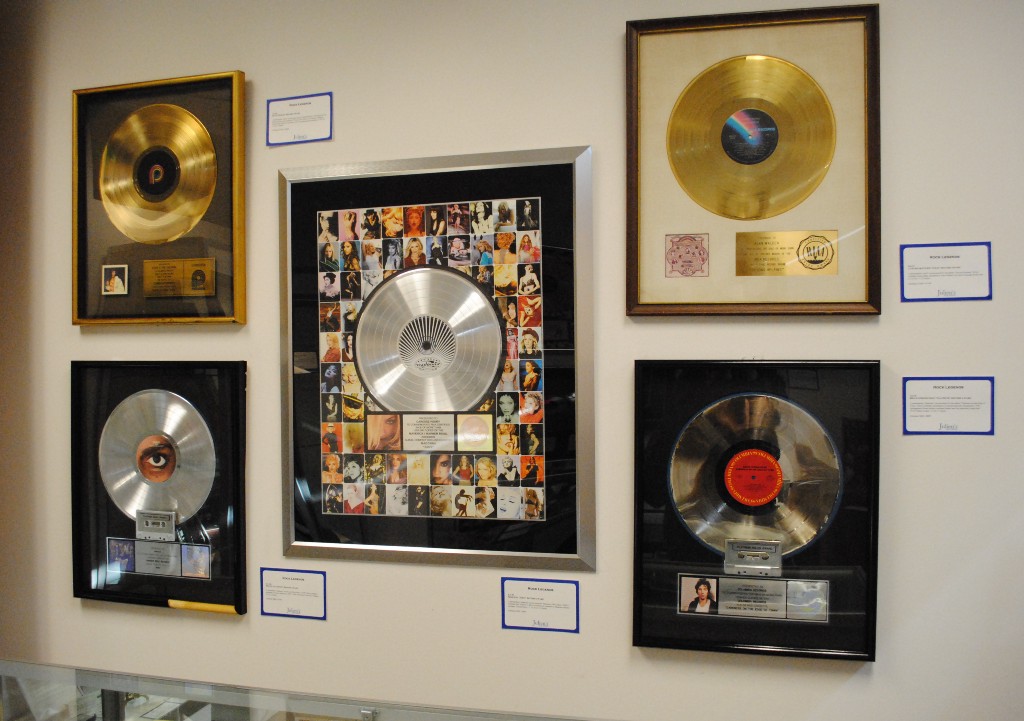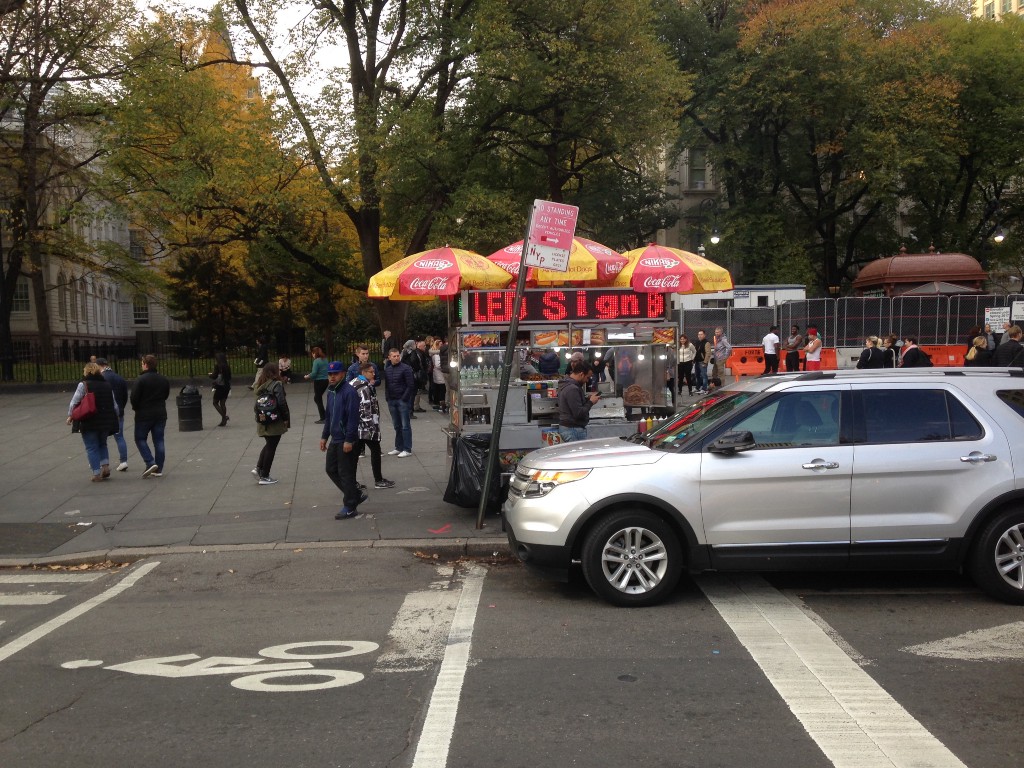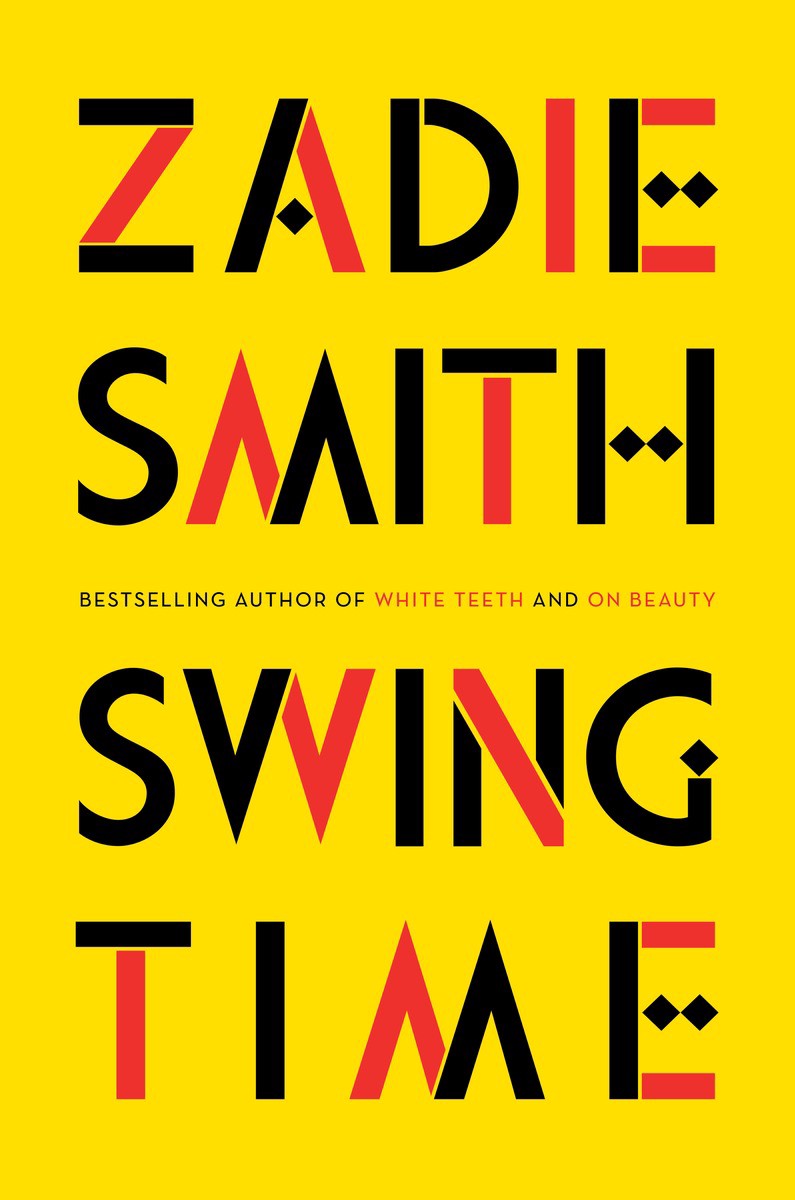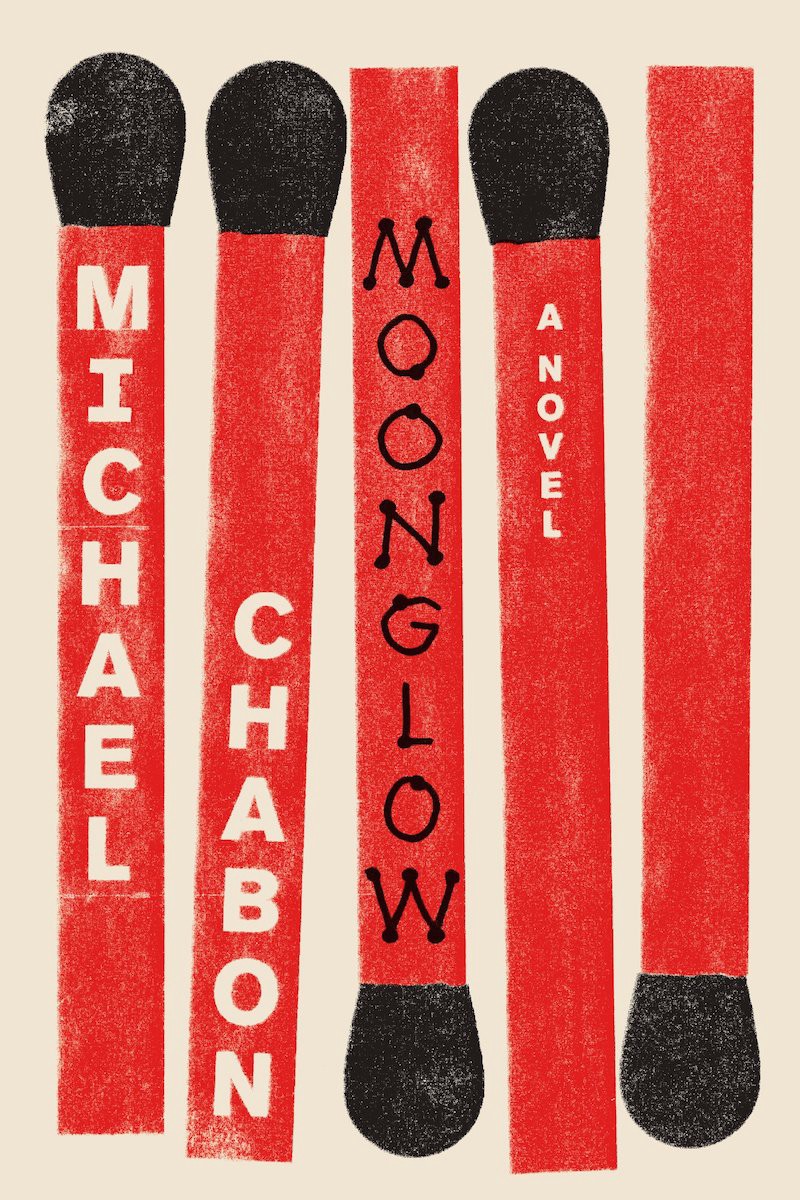A Poem by Sam Sax
Turns out
all the holocaust books we read
in grade school weren’t enough.
the class outraged, youth shouting
never again. in the texts i became
brave, resistance child, stalking
the night’s antique shadows, disproving
a devil’s arithmetic, lettering every star.
easy to be righteous in the face
of tyranny so dead, the terror’s just
an old rope of letters, a photograph
developed in a darkroom, the tattoo
on a family member’s leathered arm
but even he smiles as you dance
around like the goofy animal you are.
what then when the terror lives?
when the cabinet’s filled with poison bread?
when they come for my friends,
when they come to my bed, when
they come, they come. come stars
to guide our meat across the night’s
opera of skulls. come letters brave
enough to harvest joy from the coming
darkness. come art sharp as a knife
tearing the blood from the white
in our flag. you can say there is no road
map for the red mattress, for the police
-bag forced over a chanting head. but look
to any history & there’s the path
an outraged flood, a million bodies
in the street, a fence between blood & money,
a government shaking. for our lives & our love
we must do all we can before we’re forced
back below the floorboards.
Sam Sax is the author of Madness (Penguin, 2017) winner of The National Poetry Series & “Bury It” (Wesleyan University Press, 2018). He’s received fellowships from the National Endowment for the Arts, Lambda Literary, & The Michener Center for Writers.
The Poetry Section is edited by Mark Bibbins.
Now That's What I Call A War On Christmas!
Soundscan Surprises, Week Ending 11/10
Back-catalog sales numbers of note from Nielsen SoundScan.

The definition of “back catalog” is: “at least 18 months old, have fallen below №100 on the Billboard 200 and do not have an active single on our radio.”
Stevie Nicks is on the 24 Karat Gold Tour and played at TD Garden last night in Boston. Did you see her? Please don’t brag. She also just released deluxe editions of Bella Donna and Wild Heart. Rush just released a documentary about their last North American Tour called Time Stand Still.
The back catalog is approximately HALF Christmas albums this week, so you know what that means: Mannheim Steamroller! Also: Nashville Christmas, Charlie Brown Christmas, Country Christmas, Women of Christmas, and Christmas with the Chipmunks. Snaps to Barbra Streisand for just calling hers Christmas Album.
Now. Are you ready for a tongue twister? There are many versions of “Now” Christmas Albums. First, we have Now That’s What I Call Christmas! “a two-disc holiday music compilation that was released on October 23, 2001 by Universal Music Group. The album is part of the Now! series, and the first holiday-themed album in the series.” Nows 2 and 3 were released in 2003 and 2006, respectively, but only The Essential Now That’s What I Call Christmas, released in 2008, has made it onto the back catalog (Essential does better than Original, for those keeping score from home). Now That’s What I Call Christmas 4, a more modern take, came out in 2010 but has not been as popular, probably due to the inclusion of Various Rucker. And a version of “Happy Christmas (War is Over)” by MAROON FUCKING 5. I will not link. Now That’s What I Call A Country Christmas obviously sells very well and appears on the back catalog. Now that’s what I call ESSENTIAL CHRISTMAS!!
This week’s true surprise: Meat Light, a re-release from Frank Zappa based on the “vast musical treasures” found in his estate. It is:
a three-disc set that includes the original 1969 vinyl mix (restored, remastered and available on CD and digitally for the first time), Zappa’s never-before-released original sequence and a variety of unreleased rare alternate mixes, live performances, and studio session outtakes.
Sounds delicious. Oh and RIP Leonard Cohen.
7. STEVIE NICKS BELLA DONNA (DELUXE EDITION) 4,302 copies
15. STEVIE NICKS WILD HEART (DELUXE EDITION 3,175 copies
32. RUSH SNAKES & ARROWS 2,200 copies
77. COHEN*LEONARD ESSENTIAL LEONARD COHEN 1,565 copies
79. MANNHEIM STEAMROLLER CHRISTMAS SONG 1,544 copies
90. MANNHEIM STEAMROLLER LIVE 1,438 copies
93 MANNHEIM STEAMROLLER CHRISTMAS CELEBRATION 1,429 copies
102. NOW ESSENTIAL CHRISTMAS ESSENTIAL NOW THAT’S WHAT I CALL CHRISTMAS 1,380 copies
103. ZAPPA*FRANK MEAT LIGHT 1,379 copies
115. VARIOUS NOW CHRISTMAS 1,332 copies
138 VARIOUS NOW COUNTRY CHRISTMAS 1,226 copies
147. MANNHEIM STEAMROLLER CHRISTMAS EXTRAORDINAIRE 1,174 copies
(Previously.)
A Winged Victory For The Sullen, "Retour Au Champs De Mars"
A thousand hours from now this day will still be happening.

Remember on Tuesday when everyone was all, “Can you believe that the election was only seven days ago?” That was only two days ago. I think we need to resign ourselves to the fact that our days no longer correlate to the traditional twenty-four hour model. We will still use that construction to mark time, but everyone who is now alive must make peace with a new reality in which each day goes on forever and even though the darkness descends so soon there are still a million hours to endure before the sweet embrace of sleep — the only thing left to love in your life — lets you all too briefly blot out the horrors of consciousness. Welcome to the new world, where nothing feels good and it all goes on without end.
Anyway, here’s music. Enjoy.
New York City, November 11, 2016

[No stars] The sight of thick water on the slab of a neighboring balcony confirmed what the dim light and sloshing sounds had warned of. In a lull of the viola and piano came the sound of rain beating against the porthole window of the school’s practice room. It was darker coming out of the morning music lesson than it had been going in. Shining water stretched all the way through the lanes of the subway turnstiles. Down at Union Square, stray sticky-pad messages of political defiance were being trampled into the water on the subway stairs. The rain had become a full downpour; in the space of one block of walking it had soaked through jeans to the skin. The jeans would stay wet well past midday, despite being blotted with paper towels while the rain out the window blew by in pale masses. The rain let up for a while and young marchers—under umbrellas, in raincoats, one shirtless—came chanting down Fifth Avenue. What looked like another break in the afternoon was really a heavy, hard-to-see drizzle. Fallen ginkgo leaves held their shape, resisting the flattening forces around them. A rip formed in the clouds where the far side of the river could be seen, and for a while a clear light came in. Then that faltered, and all that remained was a somewhat brighter drizzle.
Holiday Dread: The Desert
Celebrating togetherness in the scorching heat.

When I think of The Holidays, here is what I picture: lying in the back seat of my family’s minivan, headphones jammed in my ears, counting the telephone poles between Los Angeles and somewhere hotter and stupider and even more boring. When I was a kid — when she was alive — we did Thanksgiving and Christmas at my Catholic grandmother’s house, which was located in a planned community half an hour outside of Phoenix, a very standard-looking suburb dropped, thunk, in the middle of an empty desert.
We stopped on the way in or out of town at my Jewish uncle’s house in Palm Springs. That was kind of lovely, actually: Larry is a teamster and an eBay antiques dealer, a man with a commercial class A driver’s license and an aesthete’s eye for beautiful, delicate things, mostly made of silver and glass. I mean Palm Springs was boring and horrible too but at least we didn’t have to be there for long, usually, and my uncle and his friends weren’t very interested in kids, which suited me just fine. I could sit on his plush leather couch and admire my reflection in the mirrored coffee table and read all afternoon.
But then there was Phoenix. Some of it was just standard family drama: alcohol, old resentments, arguments that blossomed into full-scale fights, because everyone I’m related to has a temper. Mostly, though, it was the quiet that unsettled me. It gets cold in the desert in the winter, the kind of cold where the sun can be too hot on your skin but the hollows of your ears burn when you try to take a walk. The air is too empty to hold onto temperature. The silence and the stillness of it felt present, and threatening: circling a man-made lake and watching the golden sun slide through the perpetually flat blue of the sky. You could see the moon all day. Nothing in the world was where it was supposed to be.
I mean, there was a more general feeling of displacement of course. I was a Jew on Christmas. I was a Jew on Christmas in the desert. It’s not that I wanted any of the trappings I saw on TV — snow or whatever. I did like the resort we stayed in, a place resonant with white people’s nostalgia for native culture and the cowboy days of the southwest. But there, that was another displacement: lying on a chaise lounge and slathering my fishbelly skin with SPF 70 at a hotel called The Wigwam.
It just felt like I didn’t belong anywhere, like none of the places I found myself were really supposed to exist. The whole country was celebrating togetherness and northern winter coziness while I squinted through sunglasses, read a magazine, cut across a golf course on my way to the store. We would stop on the way home in a town called Quartzite, a row of trailers on either side of a wide street just before the California border, so that my dad could buy shards of meteorite and pulled pork sandwiches. Some years he got food poisoning but some he didn’t.
This is what I think of, when I think of The Holidays: orange trees with their trunks painted white against the scorch of the sun, and wrapped in red velveteen ribbons to make them look festive. The time my little brother fell off his bike on a gravel path and scratched himself up so badly that he and my parents spent the whole of Christmas eve in the ER.
I had declined to go biking. Instead I sat in our hotel room in a robe and ordered room service and pay-per-view, and I thought that this was what it should be, that everyone should celebrate this way: by making your own world, a place that was insular and small and safe, where you were the only person — except, of course, for the people who made my dinner, and did my dishes. I wrapped myself up against the clear, deep dark outside and drowned out the noise in my head by falling asleep with the TV on.
Zan Romanoff’s first novel, A SONG TO TAKE THE WORLD APART, was published by Knopf in September. She lives and writes in LA.
Holiday Dread is The Awl’s series dedicated to the season of joy and other emotions. Previously:
Waltzing With Zadie Smith
On her new novel, and stories told through time.
Zadie Smith’s new novel, Swing Time, pays homage to the 1936 movie of the same name starring Fred Astaire and Ginger Rogers, alongside other old-school musicals: Show Boat, South Pacific, Ali Baba Goes to Town. These are watched on old VHS tapes by the never-named narrator and her sometime friend, Tracey; two brown girls who meet at age seven in 1982 in Thatcher’s Britain at a dance class filled mainly with white kids.

Lily Bingham, their white friend, proudly declares herself to be “colour blind,” only seeing what is “in a person’s heart,” but she takes offense at a dance video with only black people on the cover. She can never really understand what it is to be a brown girl, in love with old musicals and the tradition of tap-dance; a tradition which, the narrator tells, us came about on the docks of slave ships as Irish crew and black slaves danced creating a hybrid form which would later be the speciality of Fred Astaire, Ginger Rogers and Jeni LeGon — a young black dancer in the 1930s and ’40s, less well known than her peers, but whose story becomes crucial to Tracey and the narrator.
The girls grow up in sync like a pair of dancers learning their moves, only the narrator has flat feet and cannot dance, at least not as well as Tracey. They have all the passion of childhood friendship, with its jealousies, secrets and power-struggles. Tracey is confident and cruel, while the narrator slips into the role of timid sidekick — passive, and there for Tracey to pick up and put down when the mood takes her. The dynamic reminds me of the knowing Baba and the easily led Kate in Edna O’Brien’s The Country Girls. In that book the girls are tied together by coming from the same small town. In Swing Time the girls are tied by their love of dancing and show tunes, and their status as neither white nor black, but brown — belonging and not belonging to both communities.

I wanted to love this book; I’ve grown up with Zadie Smith. I picked up White Teeth in a bookshop as a teenager and found myself unable to stop reading. Irie, who gets a passing cameo in Swing Time, spoke to me, of a set of insecurities I knew. We were different — I was an underweight white kid pretending I wasn’t on the spectrum (my diagnosis was clearly a mistake) while Irie was a fat mixed-race teenager, but no one before had expressed so eloquently the loneliness and shame of being a teenage girl who is not desired. I loved Irie’s family too. Their warmth, vulnerability and craziness rang true. Smith was an idol to me, in the way that the dancers in the VHS tapes watched and rewatched by Tracey and the narrator in Swing Time were to them. I would go back over her work in wonder, trying to figure out how she did it, how she made it so seamless. To not love a Zadie Smith novel felt unnatural, so when I couldn’t get into Swing Time at first I was hurt.
The narrator’s relentless passivity jarred, and her lack of name or even allusion to a name, puts a distance between her and the reader. It’s a longstanding literary technique, used in Du Maurier’s Rebecca to great effect, but in Swing Time our protagonist’s namelessness disturbed me. I found myself wondering what name her parents, who met at a Socialist Worker’s Party meeting, would have given their only child. I ended up self-centeredly giving her my own name, but I still found Tracey with her ‘cruel expression’ and knack for riling folk, more interesting. Late in the novel, the adult narrator is horrified by a series of emails sent by Tracey, but also impressed: “[I was] stunned too, by how well she wrote, never boring, not for a second, her dyslexia and grammatical errors were no hindrance to her: she had the gift of being interesting.”
Young Tracey is a great romancer. She brags of her father being a backing dancer to Michael Jackson. This, she tells her friend, explains his many long absences — and the gun hidden in the bathroom, which he needs to defend the singer. The gun does exist, but for less glamourous purposes. Tracey’s mother inspires no such romantic notions. The narrator describes her with “tin hoops in her ears, the triple skin, hair pulled back tight, a cigarette hanging from her mouth.”
In contrast, the narrator’s mother is a romantic parent; a beautiful and ambitious Jamaican woman filled with political passion and a desire to change the world for the better. Smith writes, “She could never just sit there and let time pass, she had to be learning something. She might arrive at the beginning of class with say, The Black Jacobins in hand, and by the time I came over to ask her to swap my ballet shoes for tap she would already be a hundred pages through.” She is fierce, and at times comic, digging a hole in the middle of the communal land to grow vegetables, only to hit clay and decide instead of have a clay modelling workshop on the balcony to allow the local children to express themselves, stating this was her intention from the onset. The narrator and her mother are different as can be, one personified by timidness, the other by passion — it’s telling that later in the book, when the narrator takes a politically ideological but personally dubious decision, it is the mother who applauds her.
It took a while for me to understand that the narrator’s passivity — the lack of importance she gives her own story almost until the end — was what defined her, what makes her interesting. Her porousness as a character was as compelling as the brashness and passion of those surrounding her. As an adult, she works as a compliant assistant to a cavalier pop-star called Aimee. It’s maddening to watch her taking Aimee’s bullying. Yet Aimee, like Tracey, is compelling. She has big ideas, and she moves the story forward to Africa, where she wants to build a school.
Here the story alternates between a London at once familiar to the reader from earlier parts of the book and alien in its modern incarnation as Aimee’s London (luxurious but weirdly bland), and Africa — in all its newness, energy, and impenetrability. The latter comes at the reader dancing in the persona of the kankurang, “a wildly swaying orange shape, of a man’s height but without a man’s face, covered in many swishing, overlapping leaves. Like a tree in the blaze of a new york fall which uproots itself and now dances down the street.” The ideas about race explored in London come to a fore in Africa, where the narrator goes to see relics of the slave trade, of which her mother had told her so much, but she feels almost nothing.
I tried to put myself in a meditative frame of mind. To picture the ships in the water, the human property walking up the gang-planks, the brave few who took their chances and leaped into the water in a doomed attempt to swim to shore. But every image had a cartoon thinness to it, and felt no closer to reality than the mural on the side of the museum that showed a strapping, naked Mandika family in neck chains being chased out of the bush by evil an Dutchman.
The revelation that Jeni LeGon had a horrible time in Hollywood, hits our narrator far harder, being more real to her, relating directly to her own experience . She has always known about slavery, but LeGon’s isolation is not only an example of a more recent cruelty, but also one which shatters the oldest illusion she shared with Tracey. “I’d wanted to believe that friendship and respect could have existed…but Astaire never spoke to LeGon on set, in his mind she not only played the maid, she was in actuality little different from the help.”
This passage, late in the novel shows the pain of the narrator’s individual disillusionment, and by this point I loved the porous, sensitive, pliant narrator with her peripatetic life and infinite uncertainties having found more questions, instead of answers. The differences between life in the African village where Aimee builds the school, and the London life known to the narrator, are stark. While the narrator shares a running joke with a local schoolteacher, whispering, “Still no baby?” each time they see one another as reflection of the pressure on young women to have children, it suddenly occurs to her that there is a decade between them. She is thirty-two, while Hawa, the teacher, is still in her early twenties. The village also has its differing religious factions, with diametrically opposed ideas about dance, and the ever-present peril of “the back way” to Europe, which involves travelling across Africa then taking a boat from Libya to Italy — a route that sees thousands perish, from drowning or hypothermia, every year.

It is Africa, though, where the narrator begins to change, grow and see the unmitigated lease of Aimee’s selfishness. Africa brings out the controlling, covetous side of the singer who has never been denied anything. Aimee takes a young African lover, considering only how lucky he is to have her. She wants to own a beautiful, sleepy, black African baby who is passed to her to hold — she buys the child from her poverty-stricken parents.
This monstrosity brings the narrator to reflect on her friendship with the intoxicating Tracey and their shared love of music. Badly let down by the unfeasibly prosperous world of Aimee, the narrator returns to the London she knew as a child where she ends up at Tracey’s front door, long after their paths diverged as teenagers. We learn Tracey did something the narrator considers unforgivable, hurting not only the narrator (who has been hurt by Tracey all her life) but attacking her imperfect, but ultimately loving, parents through the narrator’s own deep-seated insecurities about their relationship. That the narrator’s Dad used to adore Tracey and she him, makes this betrayal even worse, though not in the way that the reader is earlier led to believe.
The adult Tracey continues to do immeasurable harm to the narrator’s fragile family, but when she reappears, she retains a magnetic power over the reader and narrator alike. She has danced and lived and made mistakes which have kept her on the same corridor of flats where she and the narrator grew up, but I found myself questioning whether Tracey’s mistakes — the conspiracy theories she so readily believes in, the poison pen letters she sends — are really that much worse than the narrator’s wasted years in the thrall of a narcissistic singer. The story leaves our narrator near the flat where she grew up, ready to go and speak, once again, to her old friend. She’s grown up a lot, and takes heroic, almost catastrophic action that is so contrary to her passivity that I liked her for it as I wondered what the hell she was doing. It’s sort of the equivalent of that friend who never loses it, suddenly losing it spectacularly; ugly, cathartic, healing and frightening all at once.
It was this act that made me like the novel, even as I recoiled in horror. I liked the complexity of the narrator and her fear of life which was as endearing as it was infuriating. I didn’t feel passionate love I felt for White Teeth, but I appreciated Swing Time with something more complex and adult. I liked the way the book moved back and forth through time as though this too were as fluid as space, and it will remain with me. It’s a slower dance than Smith’s earlier work, more languid, softer; but it requires more skill to dance slowly and still keep the rhythm, tell the story.
How To Not Drink On Thanksgiving
Thank yourself later.

You matter. Your life matters more than this one day. It matters more than your family’s temporary puzzlement. Your life sure as hell matters more than what your jackass cousin who has never left his hometown but still somehow knows everything about everything thinks of you.
Say it over and over. Write it on your palm and look at it under the table. Change all your passwords to Y0uM@tter for the week so you’re forced to type it to get anything done. (Let me know when you do this so I can hop online and run up your Nordstrom tab. I need shoes, a lot of shoes.)
Also practice saying “I don’t drink.” Not “I’m taking a break from drinking” or “I quit drinking.” Those could prompt well-meaning people to say, “But it’s Thanksgiving and we always have Mom’s prickly pear mangoritas on Thanksgiving, just like the Pilgrims did. Can’t you quit again tomorrow?”
No. You are not going to just quit again tomorrow. Because you don’t drink, so you don’t have to quit tomorrow. You don’t ever have to quit again. Say it. I don’t drink.
That’s all the explanation you owe anyone, by the way. You can say more if you like, but there’s no need. If someone presses the issue and you don’t want to just intone “I…don’t…drink” over and over like a scary mannequin come to life, you can always add “I’m allergic to alcohol.” Because if we apply a liberal definition of “allergic,” you are. And we will apply whatever definition we goddamn want to because your life matters.
What if that doesn’t do the trick? What if hearty Uncle Barnaby says “But you weren’t allergic to alcohol last year”? In that case, just smile and say “Medical science!” in a whoa-what-a-crazy-world-huh voice. That should be the end of it unless Uncle Barnaby is the kind of person who would hear someone say “I’m allergic to shellfish” and still insist they eat an entire bucket of crawdads because it’s Thanksgiving and your family has a Thanksgiving bucket-of-crawdads tradition. I don’t think Barnaby will push it that far, though. I know he gets a little intensely competitive at Pictionary time but he’s basically a sweet man.
If you’d like to avoid interrogations altogether, focus on being helpful. Keep your hands busy. Dice the hundred carrots for the hundred-carrot stuffing. Tug one end of the dining room table so the leaf can slide in. Not only will no one notice you don’t have a drink in your hand, it will also be easier to deflect topics and questions that might make you forget you don’t drink. Let’s practice:
YOUR MOM: “You know, they say if you don’t lose the baby weight in the first two years you probably never will.”
YOU: “Did you know that carrots were originally grown as medicine, not food?”
YOUR COUSIN: “I saw online where instead of pardoning a turkey, Barry Hussein Obummer bites its head off and sends it to ISIS as a loyalty offering.”
YOU: “Remind me — is this table maple, or walnut? I would like to know its entire history, if anyone can fill me in!”

Also, if possible, bring another sober person with you for silent support. Ideally someone you know or have at least met before — you are legally allowed to guilt your spouse or partner into being this person, if only for the day. But if you have to make an emergency run to your hometown mall to stand in the food court and scream “Paging Bill W.! Paging Bill fucking W.!” and then beg whoever shows up to spend six hours with your blood relatives, then hey. Your life matters. (Or I suppose you could look online for an Alkathon, the 24-hour meeting-cum-sober-party offered by many local AA groups on major drinking holidays.) Either option is also an excuse for getting out of the house for a while, just in case you’ve regressed to your teenage self and need to step away and remember who you really are. Which is, among many other things, someone who doesn’t drink.
And when it’s all over, which I promise at some point it will be, do something nice for yourself. You did something that I also promise will get much, much easier, but that right now is really hard. You deserve thanks.
Michael Chabon Is A Nerdy Night Owl
A profile of the author in advance of his new novel, ‘Moonglow’

Any profile of Michael Chabon is also necessarily a portrait of his marriage to the writer Ayelet Waldman—the two are “wholly intertwined with each other,” writes Awl pal Doree Shafrir. Waldman does a fair bit of the legwork herself in describing her husband:
“He’s never doing what’s fashionable,” Waldman said. “He’s always just doing what sparks his interest.” That, said Waldman, extended to Telegraph Avenue, which she characterized as “one of his great unheralded masterpieces.” She continued, “He engages with the emotional life of an African-American midwife in a way that’s so believable and authentic and nuanced and complicated. I know that there are some writers who feel like unless they’re actually fucking an African-American midwife they couldn’t write that character, but he did it, and I think he did it beautifully because he approaches writing women now in the same way he approaches men, with a humble openness.”
The fifty-three-year-old Chabon is most notable for this kindness and open-hearted approach to life. Perhaps it’s not unrelated to his resistance to Twitter, and his preference instead for Instagram as his main social network!
Moonglow is fictionalized autobiography (or would you call it autobiographical fiction)—the grandparents in the book are loosely based on Chabon and Waldman, down to Waldman’s struggle with mental illness. Indeed, the only thing that seems to have changed in the Chabon-Waldman household since we last checked in with them in the Times Fashion & Style section in an article entitled “Parents Burning to Write It All Down,” is a greater openness about writing about each other.
Married Writers Who Published Revealing Accounts of Parenthood and Life
Compare 2009:
When they do write about their children, Mr. Chabon and Ms. Waldman check with them first. If the topic might be sensitive, they read the child sections aloud and ask for their permission to publish.
with 2016:
Typically, no one in the family asks permission to write about another member of the family. “We don’t ask that question. Our attitude always is, ‘You get what you get.’ That’s what it means to be the child, spouse, parent of a writer.
I presume this has more to do with writing about the children while they’re still figuring themselves out, but now that they’re mostly grown up and the youngest was the subject of a viral essay in GQ, all bets are off. (In the photo that went along with that 2009 Times piece, the husband and wife are pictured with fingers, hands, wrists, and elbows intertwined, Chabon leaning against Waldman, who sits sideways in a leather armchair, her feet resting atop what appear to be oversized leatherbound books. It’s perfect.)
You can read the rest here:
Your iPhone Is Full Of Cheesy Videos You Did Not Make
Isn’t it cute when machines try to guess what we want?

If you have an iPhone, and you’ve updated it to iOS 10, you have access to a brand new facial recognition feature that is equal parts insane and fun to play with.
I came across it for the first time yesterday when my buddy Alanna tweeted about it. “Look at this psychotic video my phone made w/o my art direction or consent,” she said, which sounded like the start of my favorite type of technology interaction. Whenever a phone, computer, or bot tries to intuit what I want, the wrongness of their answers is often so endearing that I don’t care that they haven’t completed their task. I do not have a Roomba, but I imagine it’s not unlike finding your Roomba stuck on the carpet or running into a wall—tender. Your machine is trying to make your life easier, but just like the rest of us, it falls short in very specific ways. In this case, our phones are hoarding thousands of photos of our friends, guessing which faces belong to the same person, and auto-generating sentimental video montages for us to share and enjoy. To find it, just go to Photos > People > Your Person of Choice > hit play on the header image.
Your phone breaks ostensibly similar faces into their own little bunches of, say, 15 or 80 photos, and then it’s up to you to scroll through all of those bunches and merge the ones that happen to be of the same person. You can play by the rules and sort all photos of Bobby into a folder you label Bobby, OR you can be an anarchist and go by a theme, like I did here with all of the Kardashian/Jenner content on my camera roll:
Isn’t that fun? And I didn’t have to do anything, really—just tap on all of the Kims and Khloes and Kourtneys that it’d set aside, and notify it that yes, these are all related to one another.
It’s a little like those Facebook memory videos you always get prompted to share, because your friends make it funnier, but the game is heightened by the fact that Apple’s software has complete access to your unedited camera roll. You know how you take ten pics to get that one where everyone’s looking just right? All ten of them are in your video montage, and your phone doesn’t care who has their eyes closed.
To curb that insanity, you have the option to edit your video’s length (short, medium, long), and the tone of the music that plays in the background (gentle, chill, neutral, happy, uplifting, epic, club, and EXTREME). And if there are any truly disastrous photos in the mix, you have the option of omitting them.
Above all else, though, sending the videos to your friends garners such replies as, “No!” and “WHAT IS THIS??” and “Christine this is revolting.” And at the end of the day, isn’t that the greatest gift of all?
Good feature. Try it out.

